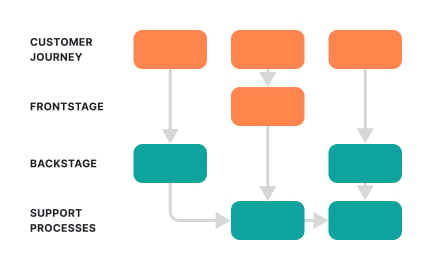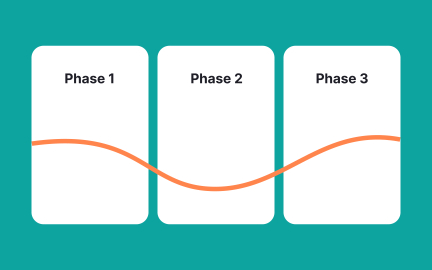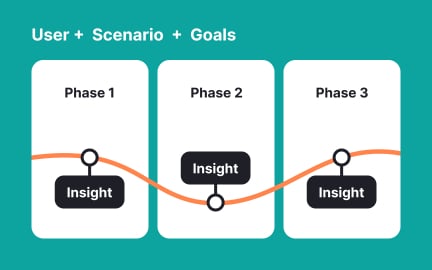Customer Journey Mapping
Customer journey mapping is the process of creating visual representations of user interactions with a product or service.
What is Customer Journey Mapping?
Customer journey mapping visualizes the complete experience customers have with a product or service from initial awareness through post-purchase support, identifying touchpoints, emotions, pain points, and opportunities for improvement across all stages of engagement. These maps reveal how customers actually interact with organizations versus how companies think those interactions happen, exposing gaps between intended and actual experiences.
This process encompasses user research, experience design, touchpoint analysis, emotion mapping, and optimization planning that helps organizations understand and improve customer experiences systematically.
Customer Journey Mapping in Product Development
Product managers use journey maps to understand how products fit into broader customer experiences and identify opportunities to improve user adoption, engagement, and satisfaction through better product design and positioning.
Product onboarding and activation optimization
Journey maps reveal how new users discover, evaluate, and start using products, identifying friction points that prevent successful activation. Maps show where users get confused, abandon trials, or fail to achieve initial value from products.
Feature adoption and user engagement enhancement
Maps demonstrate how existing customers discover and adopt new features within broader usage contexts, revealing why some capabilities go unused despite customer need and development investment.
Customer support and success integration
Journey mapping shows how support interactions affect overall product experiences, identifying opportunities to prevent problems through better design rather than reactive customer service.
Retention and expansion opportunity identification
Maps reveal when and why customers consider alternatives or expand usage, enabling proactive interventions and product improvements that increase lifetime value and reduce churn.
Customer Journey Mapping Components and Techniques
Journey stages and phase definition:
- Awareness: How customers first learn about problems and potential solutions
- Consideration: Evaluation process including research, comparison, and decision-making
- Purchase/Onboarding: Initial transaction and getting started experience
- Usage/Engagement: Ongoing product or service usage patterns and experiences
- Support/Service: Help-seeking behavior and customer service interactions
- Loyalty/Advocacy: Retention, expansion, and referral behavior patterns
Touchpoint identification and analysis:
- Digital touchpoints: Website, mobile app, email, social media, and online advertising interactions
- Human interactions: Sales calls, customer service, account management, and in-person meetings
- Physical experiences: Retail locations, product packaging, installation, and delivery
- Third-party touchpoints: Partner interactions, review sites, and community discussions
Emotion and experience mapping:
- Emotional journey: Feelings, frustrations, excitement, and satisfaction levels throughout experience
- Thought processes: Customer internal dialogue, questions, concerns, and decision-making factors
- Actions and behaviors: What customers actually do at each stage including research, comparison, and usage
- Pain points and delighters: Specific moments of friction or exceptional experience
Advanced Journey Mapping Techniques
Multi-persona journey comparison: Create separate journey maps for different customer segments revealing how experiences vary based on demographics, use cases, or engagement levels. This prevents generic optimization that works for no one specifically.
Channel-specific journey analysis: Map how experiences differ across channels (web, mobile, phone, in-person) identifying inconsistencies and optimization opportunities specific to each interaction method.
Emotional journey tracking: Focus specifically on emotional ups and downs throughout customer experiences, identifying moments that build or destroy trust and satisfaction over time.
Recommended resources
Courses

Introduction to Customer Journey Mapping

Color Psychology

Accessibility Foundations
Lessons

UX Design Deliverables

Showing Progress








